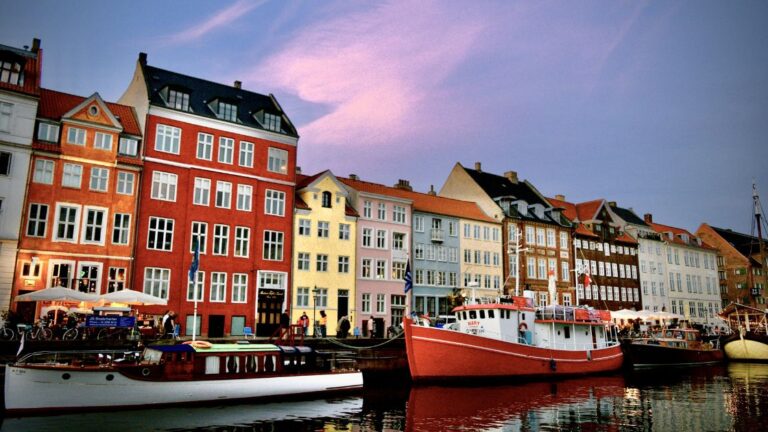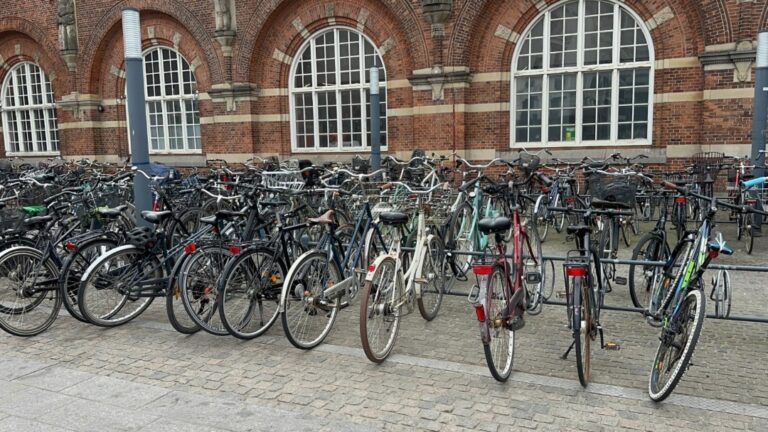Denmark’s capital city Copenhagen is a historic city packed with landmarks and modern attractions. Here’s some fascinating facts you may or may not know about Copenhagen.
Continuing our tour of the Nordic region, it’s time to head south to our dear siblings, Denmark. Copenhagen is an easy weekend break from Norway, but how much do you know about the city?

If you’re heading out on a tour of Scandinavia, or you just want to brush up on your general knowledge, keep reading for some facts about Denmark’s capital.
1. Copenhagen was the capital of Norway
Yes, Copenhagen is the capital of Denmark, but it’s also served as the effective capital of Norway twice.
During the period of the Kalmar Union, a political entity that united Denmark, Norway, and Sweden under a single monarch from 1397 to 1523, Copenhagen was essentially the capital of Norway.
Copenhagen Travel Resources: Planning a trip to Denmark? Check out this list of things to do in Copenhagen
This union was initiated to counteract the growing influence of the Hanseatic League and to strengthen the Nordic countries through mutual cooperation. Copenhagen was the administrative centre, playing a significant role in governing Norway, influencing its culture, trade, and politics.
During the period of the Denmark-Norway union from 1536 to 1814, Copenhagen served as the capital of both Denmark and Norway. This union centralised political and administrative control in Copenhagen, making it the hub of governance, culture, and commerce for both kingdoms.

The city’s role as the capital influenced Norwegian society significantly, with many aspects of Danish culture, language, and administrative practices being integrated into Norwegian life.
2. Copenhagen began as a Viking Age fishing village
Copenhagen’s origins trace back to the Viking Age when it began as a modest fishing village. Signs of human activity date back much further, but there is no evidence of permanent settlement.
Founded in the early 11th century, the settlement (or most likely, settlements) thrived due to its strategic location on the Øresund Strait, which provided abundant fishing opportunities and facilitated trade.
3. Tivoli Gardens is a historic amusement park
Opened in 1843, Tivoli Gardens (or simply, Tivoli) is one of the world’s oldest and most iconic amusement parks. Located in the heart of Copenhagen, it has enchanted visitors for over 175 years with its blend of traditional and modern attractions.
The park boasts beautifully manicured gardens, thrilling rides, and vibrant entertainment, including regular summer concerts, theatre performances, and fireworks displays.
Tivoli’s charm lies in its ability to preserve a nostalgic, fairy-tale atmosphere while continuously evolving to incorporate contemporary amusements.

This unique mix of history, culture, and fun makes Tivoli Gardens a beloved destination for both locals and tourists.
4. A fairytale at the heart of Copenhagen
One of Copenhagen’s most famous landmarks, the Little Mermaid statue, was inspired by Hans Christian Andersen’s fairy tale. Unveiled in 1913, the bronze sculpture was a gift from Danish brewer Carl Jacobsen to the city.
Sculpted by Edvard Eriksen, it depicts a mermaid who has become human, sitting gracefully on a rock at the Langelinie promenade.
The statue has endured vandalism and political protests but remains a beloved symbol of Copenhagen, attracting millions of visitors annually.
5. Copenhagen is a bike-friendly city
Copenhagen is renowned for its bike-friendly infrastructure, boasting over 390 kilometres of designated bike lanes. Rush hour in Copenhagen is a sight to behold!

The city’s commitment to cycling promotes a sustainable and healthy lifestyle, making it one of the most bicycle-friendly cities in the world, with nearly half of its residents commuting by bike daily.
6. The city’s infamous ‘freetown’ is changing
Just steps from modern waterfront apartments and historic landmarks lies Christiania, an autonomous neighborhood with a relaxed ambiance contrasting the city's bustle.
Known for its unique, alternative culture, it attracts tourists but discourages photography due to organized crime.
A recent increase in violence led residents to request shutting down Pusher Street, a notorious drug market. The area will soon be redeveloped into social housing, ending the illegal trade.
7. Copenhagen is a gastronic hub of the Nordic region
The city has long dominated the Michelin Guide for the Nordic region. There’s a staggering 14 Copenhagen restaurants included in the 2024 edition, with more close by.
The world-famous Noma continues with its three-star award, and its joined by Geranium. Also gaining three stars for the first time is Jordnær, in the northern suburb of Gentofte.
8. Copenhagen is renowned for its castles
History buffs should look no further. Copenhagen is renowned for its impressive array of castles, each with its unique history and architectural splendour.

Amalienborg Palace, the winter residence of the Danish royal family, showcases stunning Rococo architecture and hosts the daily changing of the guard ceremony.
Rosenborg Castle, a Renaissance marvel, houses the Danish crown jewels and regalia, offering a glimpse into royal life through its well-preserved interiors and extensive gardens.
Christiansborg Palace, serving as the seat of the Danish Parliament, Supreme Court, and Prime Minister’s Office, reflects the city's political and royal heritage.
9. Europe’s oldest functioning observatory
Built in the 17th century, the Round Tower (Rundetårn) is Europe’s oldest functioning observatory. Visitors can ascend the spiral ramp to enjoy panoramic views of Copenhagen, making it a popular tourist attraction.
One of the many architectural projects of Christian IV of Denmark, the observatory was built at a time when astronomy became crucial for navigation as European countries looked to expand.
10. Copenhagen Airport is the gateway to Northern Europe
Copenhagen Airport, known as Kastrup, is the largest and busiest airport in the Nordic region. It serves as a major hub for international travel, connecting Copenhagen to numerous global destinations.
Copenhagen Travel Resources: Planning a trip to Denmark? Check out this list of things to do in Copenhagen
The airport is an important long-haul and short-haul hub for Scandinavian Airlines SAS. With its extensive facilities and efficient operations, the airport handles millions of passengers annually, making it a crucial gateway for Scandinavia.
Getting into the city from the airport is easy, thanks to the fast, efficient metro system or the train, if you prefer.

